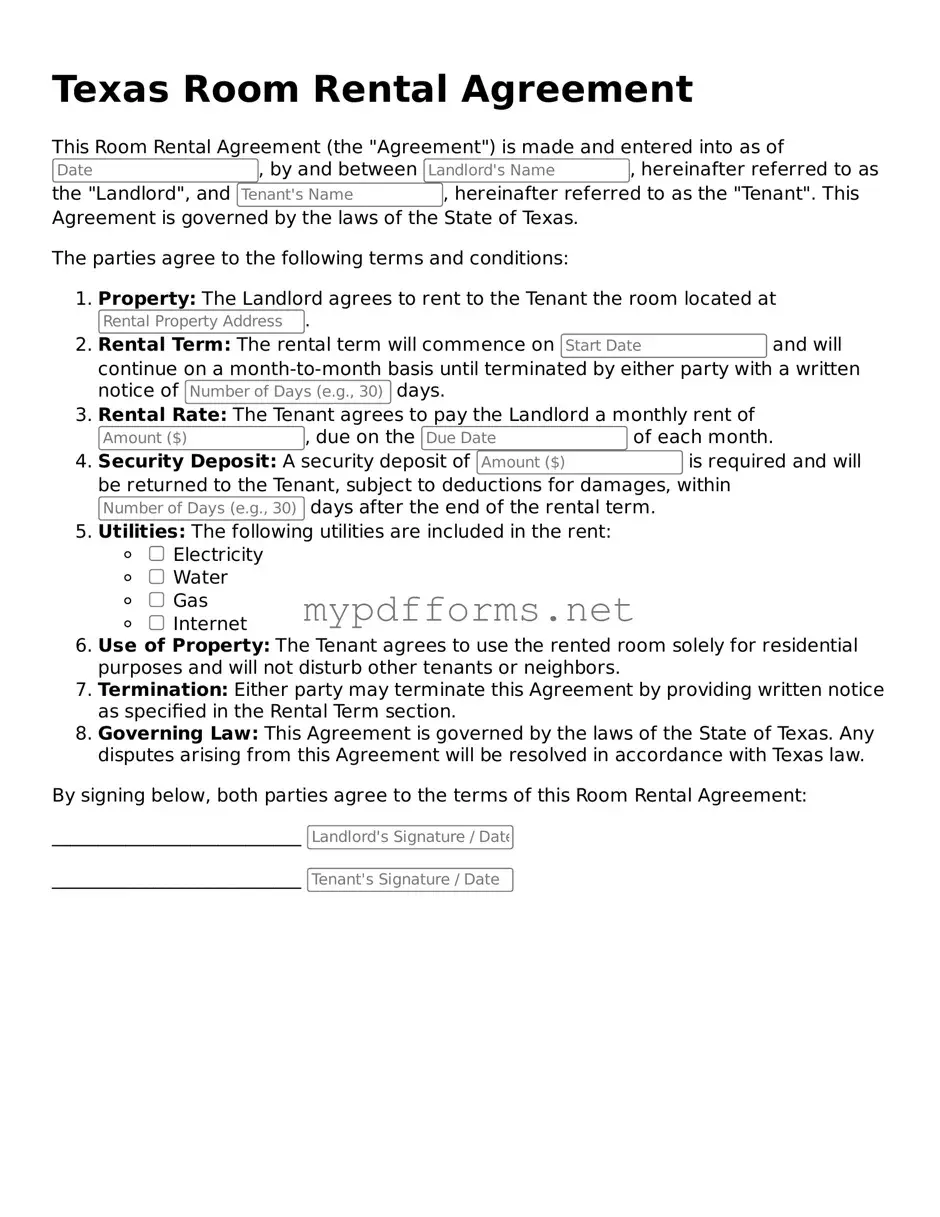The Texas Room Rental Agreement is similar to a standard Lease Agreement, which outlines the terms and conditions under which a tenant rents a residential property from a landlord. Both documents specify the duration of the rental, payment terms, and responsibilities of both parties. While the Lease Agreement typically covers entire properties, the Room Rental Agreement focuses specifically on renting individual rooms within a property, making it more suitable for shared living arrangements.
Another document that shares similarities is the Sublease Agreement. This agreement allows a tenant to rent out their leased space to another person, often with the landlord's consent. Like the Room Rental Agreement, a Sublease Agreement details the rental terms, including duration and payment obligations. However, it is specifically used when the original tenant remains responsible for the lease, while the Room Rental Agreement is typically between a landlord and a new tenant.
The Roommate Agreement is also comparable, as it governs the relationship between individuals sharing a living space. This document outlines shared responsibilities, such as rent payment, utility costs, and house rules. While the Room Rental Agreement is a formal contract with a landlord, the Roommate Agreement is often more informal and focuses on the dynamics between roommates rather than legal obligations to a property owner.
A Rental Application form is another document related to the Room Rental Agreement. This form is completed by potential tenants to provide information to landlords before signing a rental agreement. It typically includes personal details, rental history, and financial information. While the Rental Application precedes the Room Rental Agreement, both are essential steps in the rental process, ensuring that landlords can make informed decisions about prospective tenants.
For those interested in legal documentation, exploring the importance of a comprehensive Mobile Home Bill of Sale form is essential for ensuring proper ownership transfer in Maryland. You can find more details by visiting the comprehensive Mobile Home Bill of Sale page.
The Move-In Checklist is similar in that it documents the condition of the rental space at the beginning of the tenancy. This checklist helps both landlords and tenants understand the state of the property and can prevent disputes over security deposits later on. While the Room Rental Agreement establishes the terms of the rental, the Move-In Checklist serves as a record of the property's condition, making it a vital companion document.
The Eviction Notice is another document that can relate to the Room Rental Agreement. If a tenant fails to adhere to the terms outlined in the agreement, the landlord may issue an eviction notice. This document informs the tenant of the specific violations and provides a timeline for remedying the situation or vacating the property. Both documents are crucial for maintaining the legal rights of landlords and tenants, although they serve very different purposes.
A Security Deposit Receipt is also relevant, as it documents the amount paid by the tenant to secure the rental agreement. This receipt is important for both parties, as it outlines the conditions under which the deposit may be withheld at the end of the tenancy. While the Room Rental Agreement establishes the rental terms, the Security Deposit Receipt provides financial assurance and clarity regarding the tenant's obligations.
The Rental Agreement Addendum is similar in that it can modify or clarify specific terms of the Room Rental Agreement. Addendums may address unique circumstances, such as pet policies or additional fees. Both documents work together to ensure that all parties understand their rights and responsibilities, providing a comprehensive framework for the rental relationship.
Finally, the Termination Notice is another document that can be associated with the Room Rental Agreement. This notice is used by either party to formally end the rental agreement, typically providing a specified notice period. While the Room Rental Agreement sets the terms for occupancy, the Termination Notice serves as a formal communication tool, ensuring that both parties are aware of the intent to conclude the rental arrangement.
